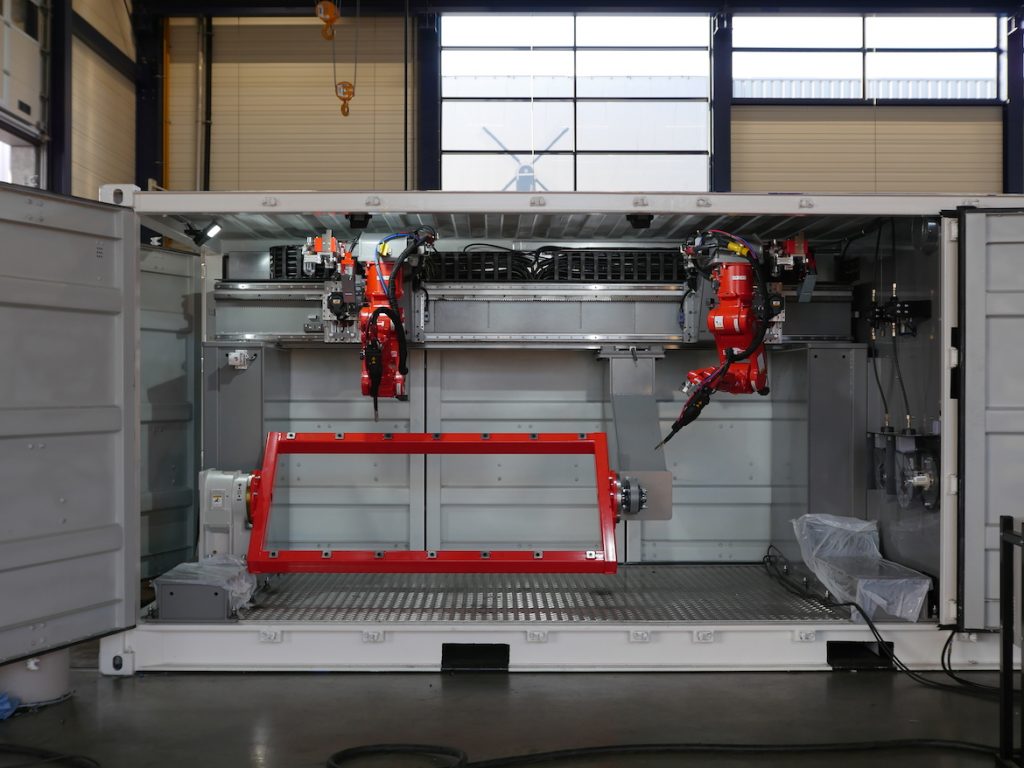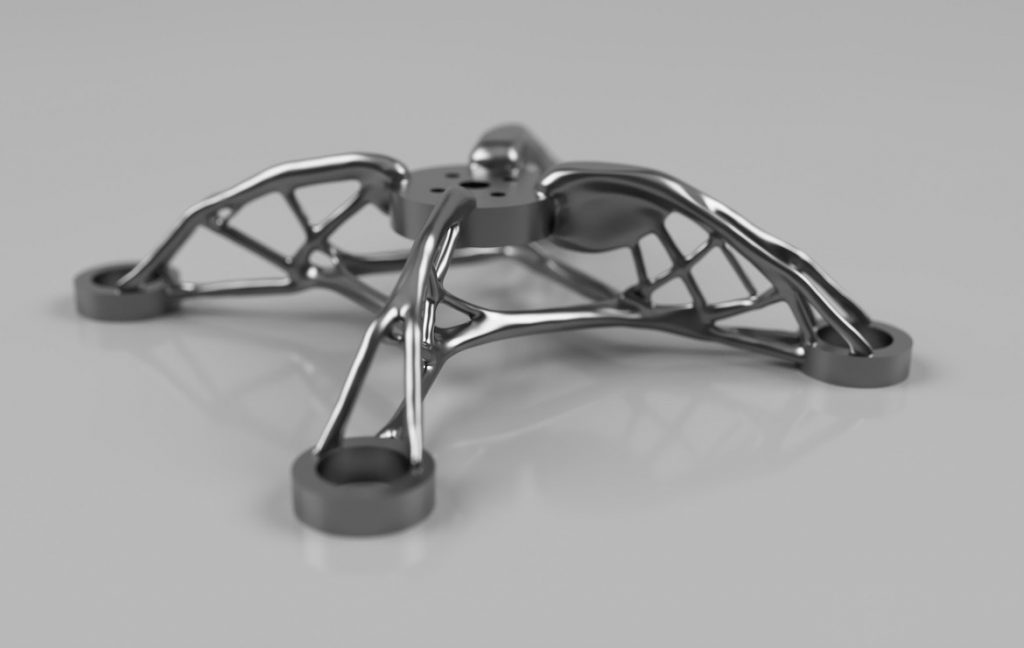Autodesk, the multinational software corporation, is trialing a novel way of incorporating additive manufacturing into the construction industry and demonstrating “the future of industrialized construction.”
To do this, the company built a 21-foot-long additive manufacturing “toolbox”. This toolbox isn’t one you could easily keep in your garage as it’s a shipping container which contains two Panasonic TS-950 robots.
The robots use directed energy deposition (DED), an additive manufacturing process which can produce large, strong metal parts. They were provided by The Valk Welding group from The Netherlands.

Autodesk claims that “there is much to be gained by approaching construction with a manufacturing mindset.” It adds that as industries are converging, technology is the “thread” that weaves all of them together.
With additive manufacturing, construction workers and architects find that the technology provides more efficient and repeatable ways to design and build parts.
By being able to 3D print large metal parts on a construction site anywhere in the world, there is no limit to imagination and building possibilities. Autodesk explain that it first spoke to customers to see how this technology could be used.

How 3D Printing Parts on Site Improves Construction
One of the customers was Dura Vermeer, a Netherlands-based construction engineering company. This company came up with three ways in which on-demand manufacturing technologies could aid construction.
These were to produce “tailored components for tolerance sensitive connections”. Currently Dura Vermeer uses off-the-shelf components for connecting a glass curtain wall to a building’s steel structure. There is a high risk of the glass shattering which could be reduced by 3D printing a “steel spider connector” for the perfect fit.
Next, the company believes the toolbox would be useful for creating integrated structural components, turning 10 separate parts into just one. This could simplify a supply chain and minimize labor needs.
Finally, the Dura Vermeer suggests that additive manufacturing onsite could also “redesign complex structural connections into beautiful, holistic nodes”. The company regularly has architects or engineers coming up with beautiful, complex designs which need to be produced into separate parts and reassembled on site. The toolbox would remove this problem and create beautiful pieces in one.
“Innovating with new technology and embracing industry-leading solutions for construction challenges allows us to bring more value to our customers,” said Ronald Dielwart, member of the board, Dura Vermeer.
Autodesk explains that it’s now “on the road in Europe” to see how other construction companies could use the technology.
Source: Autodesk News

License: The text of "Autodesk Brings Additive Manufacturing to Construction Sites with Shipping Container “Toolbox”" by All3DP is licensed under a Creative Commons Attribution 4.0 International License.